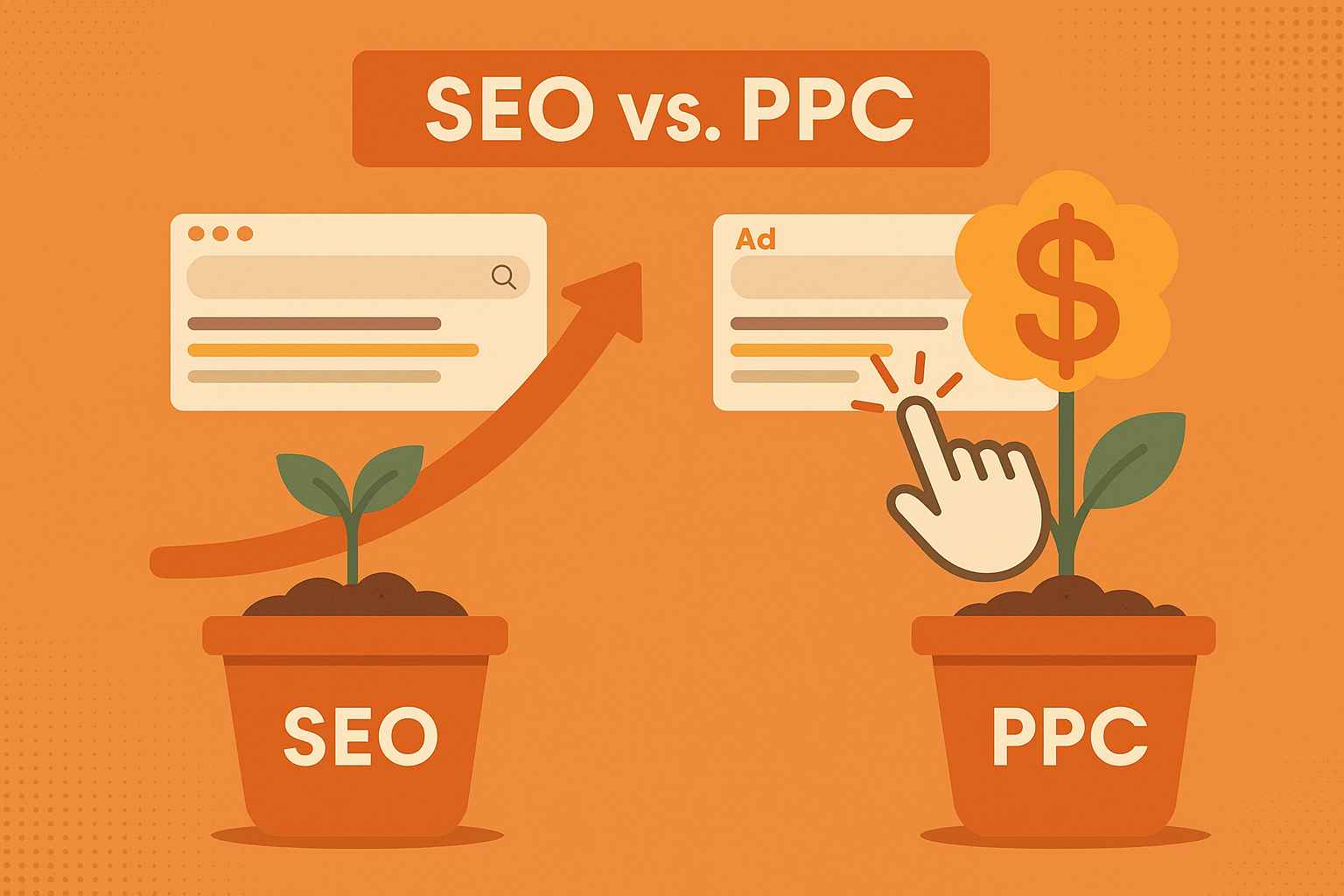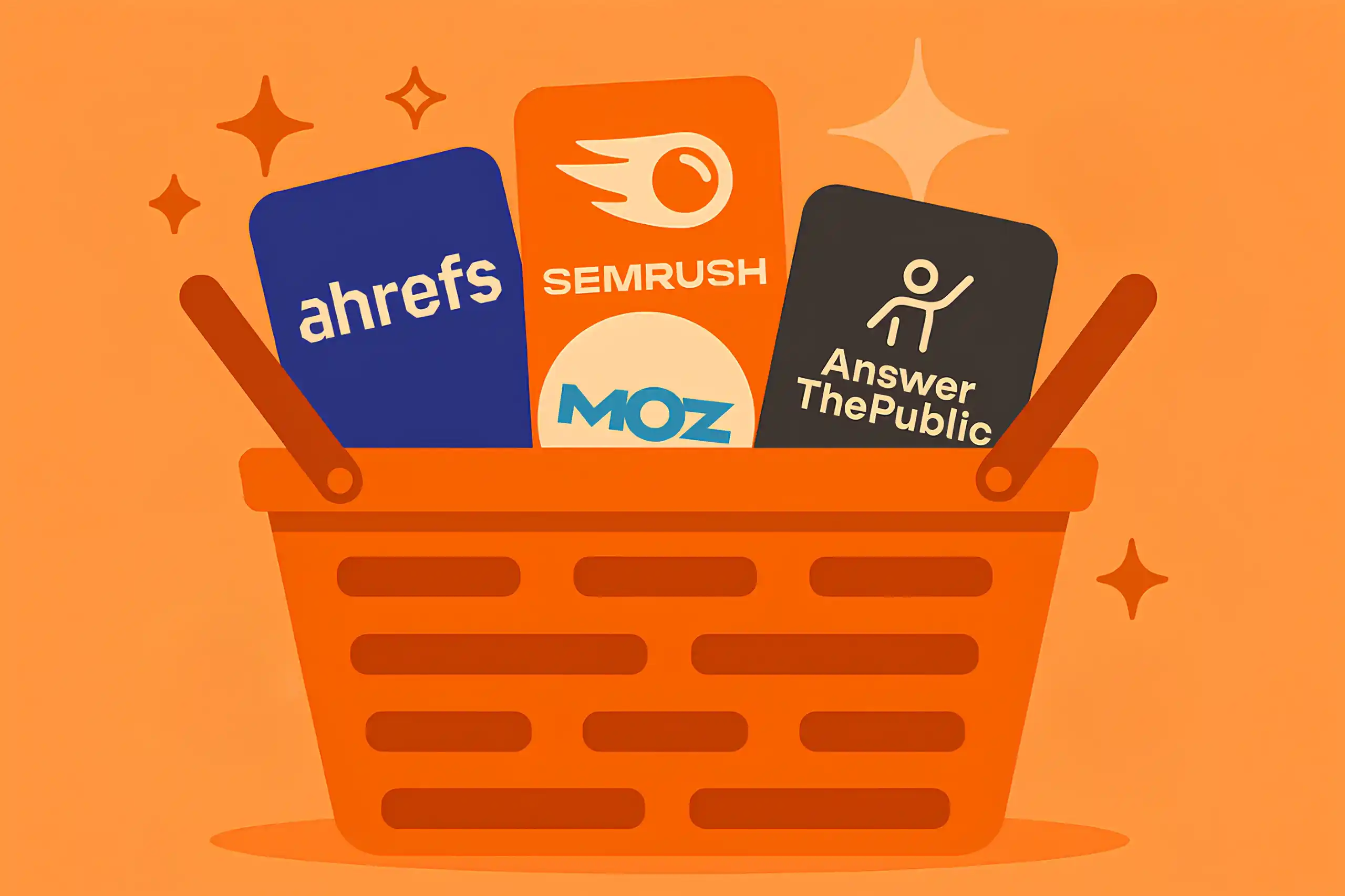Updated November 8, 2025
LLM Impact on Google Search: 100+ Statistics (2025 Data)
Google’s search results have never changed this fast, and large language models (LLMs) are the reason why. From AI-generated summaries to conversational search experiences, Google is quietly transforming how users find and interpret information.
I wanted to cut through the hype and see the real impact, so I manually gathered over 80 verified statistics from trusted sources and experiments throughout 2025. Our data shows how LLMs are influencing click-through rates, visibility, and SEO performance across industries.
Whether you’re an SEO strategist, content marketer, or business owner, these insights will help you understand how LLMs are reshaping the traditional search and user behavior.
The following insights come straight from the data we analyze daily at our SEO agency.
User Behavior & Search Intent
In March 2025, around 18% of Google searches showed an AI summary.
When no AI summary appears, people click results about 15% of the time; when it does, clicks drop to around 8%.
Only about 1% of visits with an AI summary lead to clicks on the links inside that summary.
Over half of U.S. users in early 2025 have seen at least one search with an AI summary.
Across millions of keywords, AI Overviews now appear on roughly 13% of Google searches, up from 6% in January.
Nearly nine out of ten AI Overview results are informational; people are looking for explanations, not brands.
Navigational queries showing AI Overviews doubled in just two months.
Roughly six out of ten Google searches now end without any clicks.
On average, only 360 of every 1,000 searches in the U.S. send a visitor to a website.
Less than 1% of site traffic currently comes from AI search referrals.
Also consider: 200+ Link-Building Statistics
In the news, zero-click behavior has grown fast while overall Google referrals have sharply declined.
Some publishers lose up to 79% of search traffic when their link appears below an AI Overview.
About half of the AI Overview pages overlap with regular organic listings; the same brands, just reshuffled.
Roughly 70% of users say they trust AI-generated summaries at least somewhat.
AI summaries mostly appear for long, question-based searches such as “compare” or “best way” queries.
The fastest growth in AI Overviews is happening in Science, Health, and People & Society topics.
Around 12% of AI Overviews display as lists, encouraging quick scanning instead of deep clicks.
Between January and March 2025, AI Overviews more than doubled in frequency across search results.
Users are more likely to end their session after seeing an AI summary than after a normal results page.
Visits to ChatGPT’s site jumped over 40% in less than a year, showing people often start research in LLMs now.
About one in ten adults says they occasionally get news from AI chatbots.
AI Overviews behave differently on mobile vs. desktop, often steering users toward different types of actions.
Click-through rates for the top organic result can fall by 15–35% when AI summaries appear.
Most AI Overviews cite three to eight sources, answering the query right on the SERP.
Many publishers report 40–60% drops in CTR on pages affected by AI summaries.
ChatGPT now drives over 25 million monthly visits to publishers, a rising but still small referral source.
Despite the shift, organic search remains the top driver of conversion-intent traffic.
Overall, AI summaries are cutting traditional link clicks roughly in half wherever they appear.
Also consider: 100+ AI SEO Statistics
Impact of Individual LLMs (ChatGPT, Gemini, etc.)
ChatGPT reached over 200 million weekly users by early 2025, making it one of the fastest-growing consumer tools in history.
ChatGPT.com now attracts more than 1.6 billion monthly visits, up nearly 45 percent year-over-year.
Around 52 percent of ChatGPT users rely on it for search-like queries or quick factual lookups.
One in four marketers says they use ChatGPT for keyword discovery and competitive research.
Gemini’s global traffic surged over 80 percent after its February 2025 rebrand, driven by Google account integration.
Roughly 35 percent of Google account holders have interacted with Gemini at least once since launch.
Gemini’s mobile adoption rate is almost double that of ChatGPT, largely because of its built-in Android access.
Perplexity AI crossed 150 million monthly visits in 2025, becoming a leading “answer-engine” alternative to Google.
Search sessions on Perplexity last twice as long as traditional Google sessions; users tend to explore follow-up questions.
Early 2025 studies show that around 22 percent of desktop users mix ChatGPT or Gemini with Google before final decisions.
About 11 percent of global web searches now begin inside some form of LLM interface.
Also consider: 60+ SEO ROI Statistics
Half of all ChatGPT Plus subscribers say they use it daily for professional research or work tasks.
OpenAI reports that GPT-4’s code interpreter and browsing features are used in roughly 30 percent of all premium sessions.
Gemini Advanced’s retention rate is estimated at around 63 percent, slightly higher than ChatGPT Plus at 59 percent.
About 40 percent of students in higher education admit to using ChatGPT for assignments or study summaries.
Enterprise adoption of ChatGPT Team and Enterprise plans grew more than 70 percent in the first half of 2025.
Gemini has overtaken Bing Copilot in market share for AI-powered search assistants, holding roughly 48 percent to Bing’s 31 percent.
ChatGPT referrals to publisher websites rose from under 1 million to over 25 million monthly visits in 2025.
Roughly 60 percent of Gemini users engage with at least one Google product immediately after their AI session.
ChatGPT app downloads increased 32 percent between Q4 2024 and Q1 2025, with iOS leading adoption.
In content marketing, 37 percent of agencies say Gemini’s integration with Google Workspace improved workflow speed.
ChatGPT’s average answer satisfaction rating in user panels is around 78 percent, slightly higher than Gemini’s 74 percent.
Perplexity users click through to cited sources about 18 percent of the time, far higher than Google’s 8 percent on AI summaries.
ChatGPT Plus revenue is projected to exceed $2.5 billion annually by late 2025.
Gemini’s enterprise API usage has tripled since its integration with Google Cloud, led by the SaaS and education sectors.
Around 28 percent of journalists now test their story ideas in ChatGPT or Gemini before deeper research.
Nearly 70 percent of AI-assisted content indexed in Google traces back to text first generated or refined by ChatGPT.
Overall, ChatGPT remains the dominant LLM for consumer search behavior, while Gemini leads within the Google ecosystem, reshaping how people reach information online.
Also consider: 120+ SEO vs. PPC Statistics
Traffic, Click‑Through & Zero‑Click Metrics
Around 60–63% of all Google searches now end without a single click; a number that keeps climbing each year.
In mobile searches, zero-click rates exceed 70%, making mobile the biggest driver of on-SERP behavior.
The share of clicks going to the top organic result has dropped from 28% to about 19% when an AI summary appears.
When an AI Overview is present, overall outbound clicks fall by roughly 50% compared to standard SERPs.
Position-1 CTRs have declined 15–35% since Google rolled out AI summaries on a wider scale.
Featured snippets and People-Also-Ask boxes now capture almost 12% of user attention, eating into organic traffic.
The average time spent on Google SERPs per query has grown to 16 seconds, up from 11 seconds a year ago; users scroll and compare more before clicking.
Across all industries, organic traffic dipped 8–12% in 2025 due to increased zero-click and AI-assisted answers.
News publishers saw the steepest impact, with up to 30% year-over-year traffic losses from search.
E-commerce and local business sites remain less affected; their click-through rates dropped only around 5–7%.
About 13% of all searches now display an AI Overview, but that small share already influences billions of clicks monthly.
Also consider: How Long Does SEO Take? 100+ Statistics
Ad CTRs on AI-affected SERPs have stayed nearly flat, hovering around 1.2–1.5%, suggesting users still scroll past ads for “human-written” answers.
Image and video results see the least impact from AI summaries, retaining over 90% of prior CTRs.
Direct website traffic (people typing URLs) has increased by 6%, likely because users skip Google altogether for familiar brands.
Referral traffic from ChatGPT rose from under 1M to over 25M monthly visits in 2025; small, but finally measurable.
Gemini referrals to websites still account for less than 0.5% of total search traffic, mostly to Google-owned domains.
Average pageviews per session from AI-referred users are 35% lower than from organic Google visitors.
The bounce rate from AI search clicks is roughly 15 points higher than from standard organic clicks.
Click concentration keeps tightening: the top 3 results now capture 58% of all clicks, compared to 75% in 2019.
Zero-click searches on local results, like “nearest coffee shop,” now exceed 65%, as users act directly from maps.
On mobile, nearly one-third of users never scroll past the AI summary section.
Branded queries still perform best, with CTRs above 40%, since users already know the site they want.
AI Overviews citing multiple sources (3–8 links) reduce total outbound clicks by roughly 60%.
Websites in health and finance niches are the most affected; average organic clicks dropped 22% there in early 2025.
Sites ranking below the AI Overview block often lose 40–70% of their previous traffic share.
Top-of-funnel keywords (informational intent) lost the most ground, while transactional terms still drive solid CTRs.
Zero-click sessions from desktop users are catching up fast, reaching 56% compared to 63% on mobile.
Overall, AI-driven SERPs are turning Google into more of an answer destination than a traffic source, a fundamental shift in how clicks distribute across the web.
Also consider: 140+ SEO Market Share Statistics
Ranking, Citations & Attribution Patterns
About 54% of URLs featured in AI Overviews already rank on the first page of organic results.
Roughly 20% of cited sources in AI Overviews come from pages that don’t appear anywhere on the first page; proof that ranking isn’t the only factor anymore.
Across informational searches, AI Overviews reuse the same 5–10 domains in most topics, showing heavy citation clustering.
Wikipedia, Healthline, and Forbes are among the most frequently cited domains in AI-generated summaries.
Studies show brand authority and trustworthiness now influence AI citation chances as much as link equity or DR.
E-commerce pages rarely appear in AI citations; less than 2% of total source mentions.
.org and .edu domains are 2.5× more likely to be cited than commercial .com sites for informational intent queries.
Also consider: 100+ SEO Tools Usage Statistics
The average AI Overview lists between 3 and 8 sources, with half of them already ranking in the top five results.
Only about 8% of citations lead users to actually click the cited links; most read the summary and stop.
On YMYL topics (health, finance, safety), Google’s AI Overviews tend to favor government and nonprofit sources over private brands.
In tech-related searches, product documentation sites (like GitHub or Google Developers) dominate more than 40% of citations.
Smaller niche blogs are almost invisible in AI-generated sources unless they have strong author E-E-A-T signals.
When multiple domains cover the same topic, AI systems prefer diverse domains over repetitive citations from one source.
75% of AI Overview sources are in English, even for global queries, showing limited multilingual citation diversity.
URL freshness matters more than ever: pages updated within 90 days are 30% more likely to be cited.
Topical relevance beats DR in AI citations; low-Ahrefs DR pages with highly focused content often appear over broader authority sites.
Around 18% of citations point to pages optimized for featured snippets, proving overlap between snippet optimization and AI visibility.
Schema markup presence correlates with higher citation probability, especially for FAQ and HowTo pages.
Author bylines and structured data for “expert” roles improve citation frequency across health and legal niches.
Images and lists within content slightly raise inclusion chances, as AI systems often parse structured formats first.
AI citations rotate less often than normal rankings; most cited pages remain consistent for months.
Also consider: 100+ SEO Jobs Statistics
The average word count of cited pages is about 1,900 words, suggesting AI models favor comprehensive content.
Aggregators and review sites appear in over 35% of consumer-intent AI results, especially “best” or “top” keyword queries.
Only around 12% of AI citations are attributed to local or regional domains; most remain global sources.
In finance, less than 10 publishers dominate 70% of citations, creating a closed-loop of authority signals.
AI summaries sometimes omit exact source names, reducing visibility for smaller publishers even when cited.
Incorrect or outdated attributions appear in about 5–7% of AI summaries, based on early audits in 2025.
Overall, ranking signals still matter, but AI citation patterns favor perceived expertise, freshness, and data clarity over traditional SEO metrics.
To Sum Up
The traditional search is shifting faster than ever, and LLMs are leading the change. Google’s integration of AI-driven summaries, contextual answers, and conversational results is already influencing how users interact with websites and how marketers must adapt.
The data in this report is about understanding the new rules of visibility. If you want to stay ahead, it’s time to rethink how your SEO strategy aligns with this new AI-first search era.













